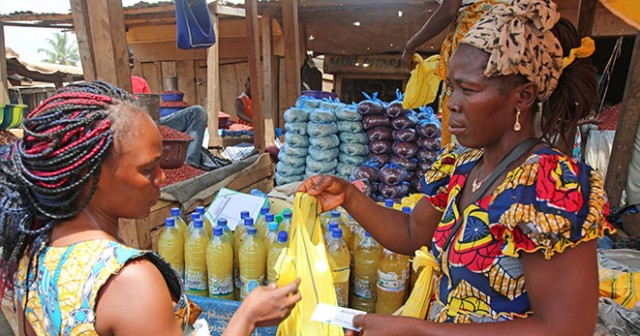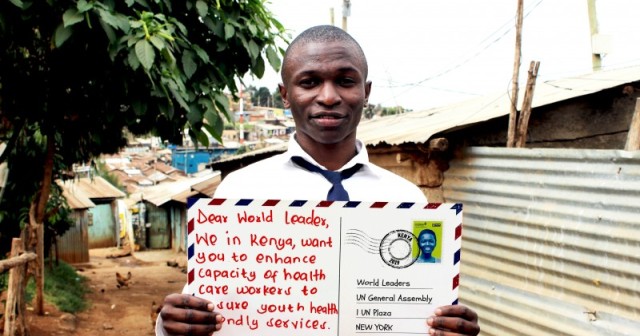Why governments need to focus on adolescents and NCD prevention
Why governments need to focus on adolescents and NCD prevention
There is a transformation occurring across much of the world. As rates of infectious disease and maternal death continue to fall, there is a growing impact of noncommunicable diseases (NCDs) such as cancers, lung diseases, cardiovascular diseases and diabetes.
As our new report highlights, these NCDs lead to 15 million premature deaths each year, disproportionately affecting low socioeconomic groups in low and middle-income countries.
Unfortunately, the key drivers of these diseases continue to grow. Caused largely by our diet, alcohol consumption, smoking and lack of exercise, these risk factors are escalating across much of the world, particularly among young people in low resource settings.
Root factors
Too often, however, these issues are framed in a way that blames the individual and suggests that it is through their choices alone that they are falling ill.
But NCDs, like HIV and other health issues, are not simply a matter of personal responsibility.
Study after study demonstrates that poverty, access to healthy foods or safe, green spaces, the marketing practices of companies, urbanisation and the environments we live in – in other words, the social, environmental and commercial determinants of health – are the key drivers of NCDs.
The root factors that influence disease outcomes are not inevitable. They are social, political and economic choices and as such this is fundamentally an issue of social justice.
It can’t be fair to set young people up for a life weighted against them with ill-health waiting around the corner through no fault of their own. So what can we do?
UN High Level Meeting on NCDs
Well, 2018 is set to be a milestone year in the fight against NCDs.
As we gear up for the UN High Level Meeting (HLM) on NCDs, we have an opportunity to conduct a comprehensive review of progress made in the prevention and control of NCDs and to assess, analyse and recalibrate strategies.
But it is more than just a moment of reflection, looking regretfully at opportunities missed or sluggish progress.
Instead, it can be a moment to galvanise action and inspire both political rhetoric and grass roots implementation. As such, we have two key recommendations regarding the HLM:
1. High level representation
In January, the World Health Organisation’s Executive Board will determine when and where the HLM will be hosted.
If they choose to host the HLM in New York this September, it will mean heads of state, already in town for the UN General Assembly, are more likely to attend and offer the political impetus that is urgently needed in the fight against NCDs.
2. A focus on adolescent NCD prevention
The HLM can also provide the opportunity to unite two spheres that often operate in parallel, namely adolescent health and NCDs.
Although 35% of the global burden of disease has its origins in adolescence, young people are rarely given adequate attention within the NCD discourse.
Likewise, NCDs are often an afterthought in adolescent health policy, despite evidence clearly demonstrating the need to address the social, environmental and commercial determinants driving risk factors among this age group.
That’s why we have partnered with some great organisations to develop our new report: Noncommunicable Disease Prevention and Adolescents.
The report outlines why we need to urgently tackle the drivers of ill-health that are established in childhood and adolescence including tobacco and alcohol use, unhealthy diets and sedentary lifestyles.
It can’t be fair to set young people up for a life weighted against them with ill-health waiting around the corner through no fault of their own.
The HLM will be a key opportunity to drive strong policy action and a shift in programming towards NCD prevention among adolescents.
Our report gives some recommendations for action including policy and programmatic interventions, accountability reforms and increased adolescent participation.
These demand interventions that are multi-level and multi-component. Interventions that are tailored specifically towards adolescents and engage families, schools, healthcare services and communities.
Follow Liam on Twitter @LiamSollis
This report was been funded by the AstraZeneca Young Health Programme in partnership with Plan International UK, with contributions from UNICEF, NCD Child, NCD Alliance, RTI International, Young Professional Chronic Disease Network and Heartlife.
Latest stories for you
Cash and voucher assistance: ensuring safety in humanitarian settings
Recommendations from our experience of delivering humanitarian CVA.
Adolescents call for action on health from world leaders
We asked adolescents what they wanted UN delegates to know about the challenges they face in...
Real Choices, Real Lives: the role of conditional cash transfers
We explore the role of CCTs in girls' lives.
World Refugee Day: what education in emergencies means for girls
Education is a lifeline for girls in crises – but millions are being left out and left behind.
Show more



